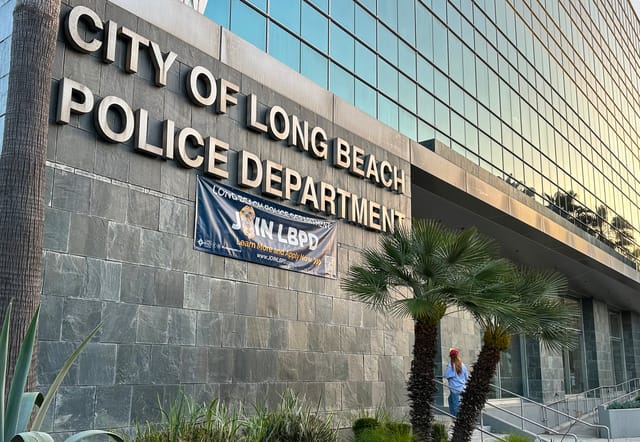COLUMN: Inclusionary zoning doesn’t work. Removing red tape does
City leaders want to expand Long Beach’s inclusionary zoning ordinance, but research shows streamlining production has a much bigger impact.

Long Beach Mayor Rex Richardson recently asked the City Council to consider an expansion of the city’s inclusionary housing policy that covers a portion of Downtown and a corridor through Midtown along the Metro A Line.
Approved in July of 2020, the city’s inclusionary housing policy requires developments with 10 or more units to set aside a certain percentage of homes for moderate-, low-, and very low-income families. Or, in lieu of affordable units, developers can pay a fee to the city to fund affordable housing projects.
Housing advocates like Long Beach Forward believe this policy should go much further. In a May 7 letter, James Suazo, executive director of Long Beach Forward, said the organization supports expanding the ordinance “citywide.” Now, the mayor is asking the City Council to look into the idea.
One big complaint with the ordinance was that it didn’t affect projects that were approved by the city before October 2020. That means most of the new buildings you see going up Downtown are exempt from this requirement.
But, as it turns out, we may have dodged a bullet and avoided stifling housing production in this crucial time when the city — and state — need it most.
Research from UCLA and UC Berkeley shows that Inclusionary Zoning (IZ) ordinances may actually prevent more homes from being built by adding costs to a development.
The 2024 report found that for every low-income unit created by an IZ ordinance, four to five total units were lost due to the cost of providing low-income housing. The resulting reduction in overall supply has a larger negative effect on prices than the few affordable units can offset.
“[Inclusionary zoning] reduces a project’s revenues, making some projects infeasible,” author Shane Phillips told me in a direct message on X (formerly Twitter). “We’re trading scarcer housing and higher rents in exchange for a small number of deed-restricted units.”
In a memo to the City Council, Richardson said “it is clear that inclusionary zoning does not depress production.”
But, according to city data, just 168 of 851 affordable units built after the IZ ordinance went into effect were a result of that policy. The other 683 were part of 100% affordable developments that would have been built regardless of the ordinance.
At a press conference Wednesday regarding the annual point in time homeless count, Richardson said that “in 2023 we had a record number of entitlements, with 2,934 housing units approved across our city.”
According to Long Beach Community Development Director Chris Koontz, 645 of those units will be designated as affordable housing. Of that, 545 are part of 100% affordable developments and 17 are from a state-imposed density bonus. Only 83 were thanks to the IZ ordinance.
It may not have depressed production but it’s clear the IZ ordinance isn’t the primary source of affordable units being built in the city.
Something that has accelerated housing production, however, are broad reforms in the city’s specific plans coupled with state laws to streamline approvals and allow for more density.
Long Beach Watchdog is a reader-supported publication. To receive new posts and support my work, consider becoming a free or paid subscriber.
For instance, developers looking to build in the Southeast Area Specific Plan, which is notably lacking an IZ ordinance, got permission to build more than 1,000 homes on the Long Beach-Seal Beach border.
While only about 30 of these homes will be set aside for low-income households, adding hundreds of new homes in a city with a severe housing shortage continues to be the best tool we have to combat rising prices.
Rather than trying to force developers to foot the bill for affordable housing, we should be making it easier for developers to build homes for all income levels.
”Simply allowing taller and denser housing without IZ requirements… will create more housing, which will slow rent growth,” Phillips said. “Slower rent growth means the money [the city can] spend on housing vouchers and other affordable housing subsidies will go further.”
In other words, legalizing and streamlining housing production citywide would have a greater impact on rent and prices than expanding the IZ ordinance to places where you’re not even allowed to build apartments.
In Los Angeles, Mayor Karen Bass found a way to spur the production of hundreds of entirely affordable developments without inclusionary zoning.
In December 2022, Bass signed Executive Directive No. 1, which fast-tracks the approval process for affordable housing. In 2023, developers submitted plans for more than 16,000 units of entirely affordable housing to the city, outpacing the total number approved in the three prior years combined.
ED1 requires the city to approve or reject a 100% affordable project within 60 days, without any hearings, outreach, or environmental studies necessary. That means a proposed development will spend far less time languishing in city review, adding to the cost of building every day.
Alongside state-mandated density bonus laws that let builders put far more units in a development than local zoning would allow, this policy has led to a cascade of submissions for 100% affordable housing construction.
And Long Beach has followed suit. In early 2023, the city declared a state of emergency on homelessness, which allowed it to enact initiatives and spending more rapidly. One of the outcomes, Richardson boasted Wednesday, was a reduction in the time it takes to approve affordable housing projects.
“During the emergency, the timeline to approve affordable housing dropped to 60 days, compared to 6-12 months pre-emergency,” Richardson said.
While the city is on the right path on a number of housing policies, IZ requirements aren’t the best tool we have to get more affordable housing built in the city and resources would be better spent elsewhere. Boosting production of all types will work better to bring affordability for all.
We need your support.
Subcribe to the Watchdog today.
The Long Beach Watchdog is owned by journalists, and paid for by readers like you. If independent, local reporting like the story you just read is important to you, support our work by becoming a subscriber.





